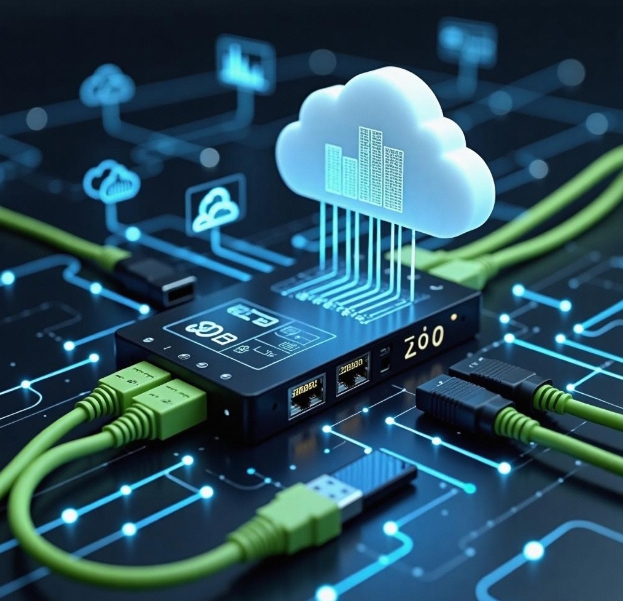From Cloud Computing to Computing Power Leasing: Building a Flexible and Scalable Computing Resource Platform
- latest articles
- 1.DApp Development & Customization: Merging Diverse Market Needs with User Experience 2.Analysis of the Core Technical System in DApp Project Development 3.How to achieve cross-chain interoperability in Web3 projects? 4.How does the tokenization of points reconstruct the e-commerce ecosystem? 5.How to Set and Track Data Metrics for a Points Mall? 6.What is DApp Development? Core Concepts and Technical Analysis 7.Inventory of commonly used Web3 development tools and usage tips 8.Development of a Distribution System Integrated with Social E-commerce 9.Six Key Steps for Businesses to Build a Points Mall System 10.What is DApp Development? A Comprehensive Guide from Concept to Implementation
- Popular Articles
- 1.Future Trends and Technology Predictions for APP Development in 2025 2.Analysis of the DeFi Ecosystem: How Developers Can Participate in Decentralized Finance Innovation 3.From Zero to One: How PI Mall Revolutionizes the Traditional E-commerce Model 4.DAPP Development | Best Practices for Professional Customization and Rapid Launch 5.Recommended by the Web3 developer community: the most noteworthy forums and resources 6.From Cloud Computing to Computing Power Leasing: Building a Flexible and Scalable Computing Resource Platform 7.How to Develop a Successful Douyin Mini Program: Technical Architecture and Best Practices 8.Shared Bike System APP: The Convenient Choice in the Era of Smart Travel 9.How to Create a Successful Dating App: From Needs Analysis to User Experience Design 10.From Design to Development: The Complete Process of Bringing an APP Idea to Life
In today's increasingly digital and intelligent world, cloud computing has become the core of global enterprise infrastructure. However, with the rapid development of technologies such as Artificial Intelligence (AI), big data, and blockchain, the capabilities and flexibility of traditional cloud computing systems are gradually revealing limitations. To better meet the demands for large-scale, high-performance computing, computing power rental systems have emerged as a new, efficient way to acquire computational resources. This article will explore the evolution from cloud computing to computing power rental, analyzing how to build a flexible, scalable computing resource platform to address the growing demand for computational power.
The Rise and Challenges of Cloud Computing
Since its initial proposal by Amazon AWS in 2006, cloud computing has become the cornerstone of global IT infrastructure. Its characteristics of pay-as-you-go, elastic scalability, and resource sharing have made cloud computing a key tool for rapid business development. However, as demands become increasingly complex, traditional cloud computing services have also begun to reveal some difficult-to-overcome bottlenecks.
Limitations of Cloud Computing
Performance Bottlenecks: The virtualization technology in cloud computing imposes certain limitations on computational performance. For applications requiring high-performance computing support (such as deep learning, scientific computing, etc.), cloud computing resources may not provide sufficient processing power.
Low Resource Utilization: The resource scheduling mechanisms of cloud service providers do not always achieve precise resource allocation, especially under high-load scenarios, where resources may be wasted, leading to high costs.
Scalability Bottlenecks: Although cloud computing has made breakthroughs in elastic scaling, when facing complex, high-concurrency computing tasks, the speed and stability of scaling may not meet the demands.
The Emergence of Computing Power Rental
To overcome the limitations of cloud computing, computing power rental systems have emerged. These systems enable users to acquire computational power on-demand through shared computing resources. Unlike traditional cloud computing, computing power rental focuses more on providing users with precise, efficient computational support and can better adapt to high-load, high-performance demands.
Advantages of Computing Power Rental Systems
Computing power rental platforms not only address the bottlenecks of cloud computing but also offer businesses more flexible and efficient computational resources. Their advantages are reflected in several aspects:
1. Flexible On-Demand Rental
Computing power rental platforms provide on-demand rental services, allowing users to select the required computational resources and usage duration based on their needs. This on-demand allocation method ensures users only pay for the computing power they actually use, significantly reducing capital expenditure.
2. Cost-Effectiveness
Through computing power rental, businesses do not need to purchase expensive hardware or bear equipment maintenance costs. Users simply rent computing capacity and scale it up or down as needed, effectively controlling costs.
3. High-Performance Computing Support
Computing power rental platforms typically provide high-performance computing nodes, specifically optimized for high-load tasks such as deep learning, scientific computing, and big data processing, ensuring users receive adequate computational power support.
4. Scalability and Flexibility
Computing power rental systems support dynamic scaling of computational resources, allowing users to flexibly adjust computing power based on business needs, avoiding the performance bottlenecks that may be encountered during scaling in traditional cloud computing platforms.

How to Build a Flexible, Scalable Computing Resource Platform
To maximize the advantages of computing power rental, building a flexible and scalable computing platform is crucial. Here are some key technologies and strategies to achieve this goal:
1. Efficient Technical Architecture
The technical architecture of a computing power rental platform needs to be highly flexible and scalable. The following technical architecture is recommended:
Distributed Computing Architecture: The platform should adopt distributed computing technology, distributing computational resources across multiple nodes to support the processing of large-scale computing tasks. Through distributed technology, the computing power rental platform can efficiently schedule resources and balance loads, avoiding single points of failure.
Resource Scheduling System: Resource scheduling is the core of a computing power rental platform. The scheduling system needs intelligent scheduling capabilities to dynamically allocate computational resources based on real-time demands, ensuring maximum resource utilization and minimizing waste.
Virtualization and Containerization Technologies: Through containerization technologies (such as Docker, Kubernetes, etc.), computational resources can be packaged into lightweight virtual environments, supporting efficient resource management and deployment. Virtualization technology allows different users to share the same hardware resources, avoiding resource idleness and waste in traditional computing environments.
High-Speed Networking and Storage: To support large-scale data processing, the platform needs to build efficient data transmission and storage systems. Distributed storage and high-speed networking technologies can improve the efficiency of data access and processing, ensuring the smooth execution of computing tasks.
2. User-Friendly Platform Design
The design of a computing power rental platform should not only focus on technical implementation but also optimize the user experience. Here are some design principles:
Simple and Intuitive User Interface: The platform should provide an easy-to-operate interface, allowing users to quickly select and configure the required computational resources.
Diverse Billing Models: The platform can offer various billing methods, such as hourly or by computational volume, to suit different user needs.
Real-Time Monitoring and Management: The platform should provide real-time monitoring features to help users track the usage of computational resources and adjust computing task configurations promptly.
3. Enhanced Platform Security
Security is a crucial safeguard for computing power rental platforms. The platform must provide the following security measures:
Data Encryption: Sensitive data uploaded by users should be encrypted to prevent data leaks.
Authentication and Access Control: The platform should implement strict authentication mechanisms to ensure that only authorized users can access and operate computational resources.
Fault Tolerance and Disaster Recovery Mechanisms: The platform should have fault tolerance and disaster recovery capabilities to prevent service interruptions due to single points of failure.
4. High Availability and Scalability
To meet the growing computational demands of the future, computing power rental platforms must support horizontal scaling. As the number of users and computing tasks increases, the platform should be able to maintain high availability and performance by adding computational nodes, storage devices, etc.

Future Development Trends of Computing Power Rental Platforms
As technology advances, computing power rental platforms will continue to innovate to meet more complex and diverse computational demands. Here are some future trends:
Intelligent Resource Scheduling: Leveraging artificial intelligence and big data analytics, computing power rental platforms will be able to intelligently predict computational demands and dynamically adjust resource allocation for more efficient resource management.
Green Computing: As environmental concerns become increasingly important, computing power rental platforms will focus more on energy efficiency, promoting the development of green computing by optimizing hardware usage and reducing energy consumption.
Multi-Cloud and Cross-Chain Integration: Computing power rental platforms will gradually support multi-cloud environments, enabling resource scheduling across multiple public clouds, private clouds, and blockchain platforms to provide more diversified computing services.
Conclusion
With the vigorous development of technologies such as artificial intelligence, big data, and blockchain, traditional cloud computing methods can no longer meet complex computational demands. Computing power rental systems, as an innovative model for acquiring computational resources, provide businesses with flexible and efficient solutions. By building an efficient and scalable computing power rental platform, businesses can not only better meet today's diverse computational needs but also lay a solid foundation for future technological innovation.
-

Applications and Challenges of Cloud Computing in the Internet of Things (IoT)
With the continuous advancement of information technology, cloud computing and t···
-

Integration of Cloud Computing and Artificial Intelligence: Enhancing Intelligent Applications
With the rapid advancement of technology, cloud computing and artificial intelli···
-

Data Security and Privacy Protection in Cloud Computing Applications
With the continuous advancement of information technology and the rapid developm···

 Blockchain
Blockchain










